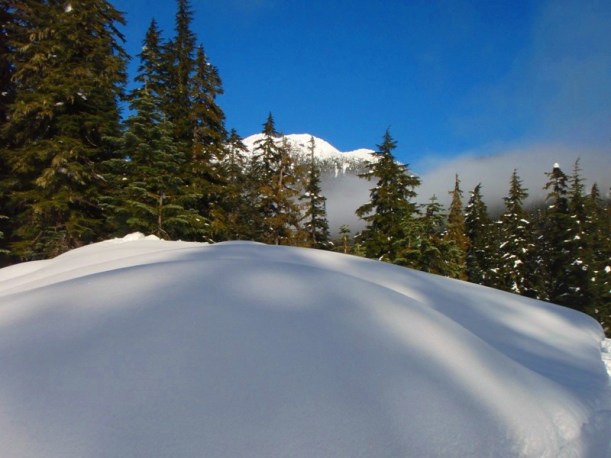I am at a loss for words. This is how I feel, faced with the daunting task of attempting to describe what lies before me, as I peer out from the top of Whistler Mountain into the vast backcountry of Fitzsimmons Valley and beyond. The backcountry has this effect on people. It’s almost mystic in its strength, enticing you to explore, yet keeping its secrets close to its heart.
And so I turn to an expert for help with unravelling its spell. Keith Reid, a professional mountain guide with Extremely Canadian Backcountry Adventures and a twenty-year veteran of the mountains, describes how its aloneness is so appealing.
“The terrain here is big, breathtaking and world-class,” he explains. “On a given day of backcountry skiing, we might traverse half a dozen glaciers and numerous high alpine peaks without crossing the path of another skier.”
Guided tours are recommended in this out-of-bounds play area— and for good reason— whether your passion is ski touring, ice climbing, heli-skiing or splitboarding. Local guiding companies, such as Whistler Alpine Guides and Extremely Canadian, can show you secret stashes of powder and most importantly, safety. The backcountry is also avalanche country and it’s reassuring to have safety experts by your side while you explore.
And what’s the best thing of all? That it’s possible to spend epic days in the backcountry then snuggle up warm and cozy in a chalet in Whistler each night.
“What differentiates the Whistler backcountry is the ability to get on a lift from the Village in the morning, backcountry ski all day, then ski back into the resort at the end of the day,” says Reid. “There is nowhere else in North America where you can access this level of terrain on a daily basis without a helicopter.”
The backcountry changes people, he adds, and maybe this is its secret, revealed.
“We introduce them to an environment which, for many, is a ski of a lifetime. Seldom does a day go by that we don’t see that twinkle in our guests’ eyes that says they have been to a magic place and accomplished something very special.”
Find out more at www.whistler.com/activities/backcountry/
By Dawn Green
~This article was published in The Vancouver Sun and The Province on 3 May 2016:
www.theprovince.com/travel/Advertisement+backcountry+beckons+Whistler/11754790/story.html





